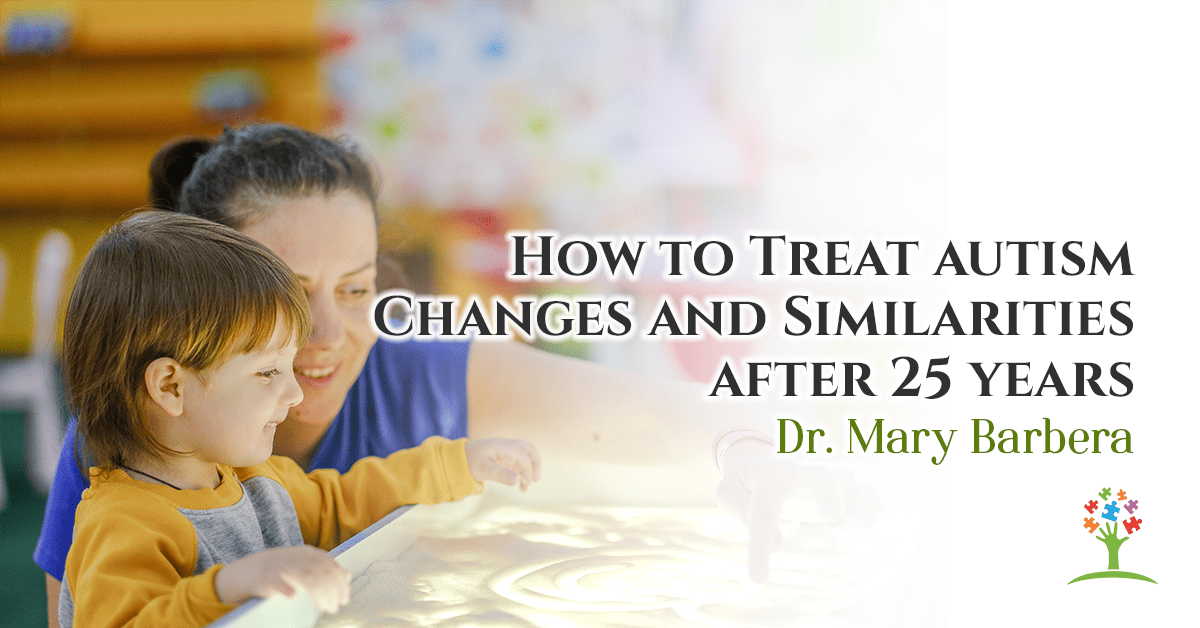How to Treat Autism? The Changes and Similarities After 25 Years
Want to Learn how to Increase Talking & Decrease Tantrums in Children with Autism or Toddlers Showing Signs?
Want to start making a difference for your child or clients?

You’ll Learn
- How Dr. Barbera Fell into the autism world
- Changes and similarities in autism treatment
- The increasing rate of autism
- Insurance coverage for ABA therapy ; what has changed?
- Difficulties faced by families in the past
- Waiting lists for autism evaluations
- Importance of continuous engagement and learning for children with autism
- Criticism of ABA therapy and misconception about treating autism
- Limitations of current intervention system and what we can do different
- Importance of parent training in behavioral approached to treat autism
- How to treat autism in the future; Hope for continued advances.
Rates of Autism
One of the major changes, since I fell into the autism world, is the rate of autism. Today, we will face the reality of the increasing prevalence of autism, with one in 36 eight-year-olds being diagnosed. When Lucas was diagnosed, there was not as frequent updating of the rates, but it was about 1 in 500. According to the CDC Rate of 1 in 36, children being diagnosed with autism, the majority of those affected are boys.
ABA Insurance
Continuing with the changes in how to treat autism, we’ll also talk about ABA insurance coverage for autism therapy, which has come a long way since the late 1990s. I was lucky enough to have Lucas’ therapy covered here in pensylvania but most states did not provide ABA therapy and parents had to pay out of pocket. Now, even though there are challenges like copays and waiting lists, there’s been significant improvement in support for individuals with autism, thanks to tireless advocacy work by people like Lorri Unumb.
We explore the hurdles surrounding insurance coverage for ABA therapy and the efforts to establish uniformity. Coping with insurance struggles and copays can be tough for parents, but there are some exemptions based on employer size or insurance type.
However, despite ABA therapy being available in all 50 states, the increasing autism prevalence and limited developmental pediatricians have worsened evaluation waiting lists. The impact of delayed diagnosis during the COVID-19 pandemic is a pressing concern we’ll address. I only had to wait a couple months to get Lucas into the Children’s hospital near me, but now, parents can wait 9 months to 2 years!

Treatments For Autism
Since falling into the autism world, treatment has improved but there is also a group of individuals who oppose the idea that we should treat autism. So, we will also tackle criticism around ABA therapy and the misconception that autism shouldn’t be treated. We highlight the importance of individualized, child-friendly, and positive approaches in ABA programs. Additionally, we’ll dive into early intervention for children aged birth to three in the United States, stressing the significance of seeking evaluation and therapy for developmental issues, especially for those on the autism spectrum. You can learn how to provide child friendly, positive teaching strategies through my online courses.
How to Move Forward With Autism Treatment
I advocate for a cohesive and comprehensive approach to support children with developmental challenges. Behavior analysts play a vital role in early intervention, mitigating the severity of speech and behavioral disorders in children with autism. In the last 25 years, the rate of behavior analysts has significantly increased, because it was really hard to find any BCBAs in the 1990s.
Furthermore, I’ll discuss the importance of a behavioral approach in parent training and teamwork among professionals to create an environment that fosters growth and development. Despite disagreements within the autism community, I firmly believe in the widespread availability of positive and child-friendly ABA therapy, particularly in early intervention, as it has proven to be instrumental in propelling children towards progress in various domains. This is why, over the last 25 years I have created strategies to help both parents and professionals and now deliver it through an online course!
Join me in this exciting episode as we highlight the importance of proper training for parents and professionals, ensuring effective solutions for speech disorders, behavioral issues, potty training difficulties, and picky eating in children with autism. Together, let’s work towards a future of unparalleled progress in the realm of autism treatment.
Thank you for your amazing support, and I can’t wait to hear your feedback and suggestions on this transformative journey!
Resources
- Workshops – Learn more about our online courses and resources with a free workshop
- Free Autism Digital Assessment
- Lorri Unumb on Who Pays for Autism Treatment; Advocacy
- Developmental Pediatrician on CDC Milestones
- Clinical Psychologist, Dr. Catherine Lord, on Diagnosing and Treating Autism
- Information on Autism Detection
Want to Learn how to Increase Talking & Decrease Tantrums in Children with Autism or Toddlers Showing Signs?
Want to start making a difference for your child or clients?
